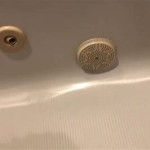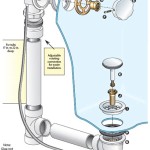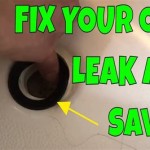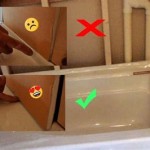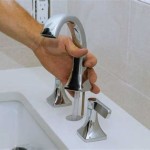How To Remove Sealant From Acrylic Bathtub Wall
Removing old or unwanted sealant from an acrylic bathtub wall is a task that requires patience and the proper tools. Acrylic, while durable, is susceptible to scratching and damage from harsh chemicals and abrasive methods. Therefore, a careful approach is crucial to ensure the tub's surface remains pristine. This article provides a comprehensive guide on how to effectively remove sealant without causing harm to the acrylic.
Before commencing the removal process, it is important to identify the type of sealant used. Common types include silicone-based, latex-based, and polyurethane-based sealants. Silicone-based sealants are the most frequently used in bathrooms due to their water resistance and flexibility. Latex-based sealants are easier to remove than silicone but are less durable in wet environments. Polyurethane-based sealants offer strong adhesion and durability but can be challenging to remove. Knowing the sealant type will help determine the appropriate removal method and products.
Preparation is key to a successful sealant removal. Gather all necessary tools and materials to avoid interruptions during the process. This includes a plastic putty knife, a sharp utility knife or scraper, a sealant softener or removal solvent (specifically designed for the sealant type), cleaning solutions, cloths or paper towels, and safety gear such as gloves and eye protection. Ensuring adequate ventilation in the bathroom is also important, especially when using chemical solvents.
Protecting the surrounding surfaces is also crucial. Consider taping off the adjacent areas of the acrylic wall and the bathtub rim with painter's tape. This will prevent accidental scratches or damage during the scraping or solvent application process. A drop cloth or old towels can be placed in the bottom of the bathtub to collect any sealant debris and prevent it from sticking to the tub surface.
Key Point 1: Softening the Sealant
The initial step in removing sealant is to soften it. This makes the sealant more pliable and easier to detach from the acrylic surface. There are several methods to accomplish this. The most common involves using a sealant softener or removal solvent. These solvents are specifically formulated to break down the chemical bonds of the sealant, making it less adhesive. Always refer to the manufacturer's instructions for proper application and safety precautions.
Apply the sealant softener or solvent liberally to the sealant bead, ensuring it penetrates the entire thickness. Allow the solvent to dwell for the recommended time, as specified by the manufacturer. This dwell time is critical for the solvent to effectively break down the sealant. Avoid prolonged exposure of the solvent to the acrylic surface beyond the recommended time, as some solvents may cause discoloration or damage if left on for too long.
Alternatively, a heat gun or hairdryer can be used to soften the sealant. Apply low heat to the sealant bead, moving the heat source back and forth to avoid overheating any one area. The heat will soften the sealant, making it more pliable. However, exercise extreme caution when using heat around acrylic, as excessive heat can cause warping or melting. It is recommended to maintain a distance of at least several inches between the heat source and the acrylic surface.
Another method involves using steam to soften the sealant. A steam cleaner or even a garment steamer can be used to direct steam onto the sealant bead. The heat and moisture from the steam will help to loosen the sealant's grip on the acrylic surface. This method is generally considered safer than using a heat gun, as the steam is less likely to cause overheating. However, ensure to thoroughly dry the area afterward to prevent mold or mildew growth.
Key Point 2: Removing the Bulk of the Sealant
Once the sealant has been softened, the next step is to remove the bulk of it. A plastic putty knife or scraper is the preferred tool for this task. Plastic tools are less likely to scratch the acrylic surface compared to metal tools. Begin by carefully inserting the edge of the putty knife under the edge of the sealant bead.
Apply gentle pressure to lift the sealant away from the acrylic surface. Work along the length of the sealant bead, gradually peeling it away. Avoid using excessive force, as this can lead to scratching or gouging the acrylic. If the sealant is resistant to removal, reapply the sealant softener or heat for a longer period and try again.
For particularly stubborn areas, a sharp utility knife or scraper can be used. However, exercise extreme caution when using a sharp tool on acrylic. Hold the knife at a shallow angle to the surface and gently score along the edges of the sealant bead. This will help to break the bond between the sealant and the acrylic. Avoid applying too much pressure, and always keep the blade moving to prevent deep scratches.
When removing the sealant, try to peel it off in large sections rather than chipping away at it in small pieces. This will minimize the risk of leaving behind residue. If the sealant breaks apart easily, use a pair of tweezers or pliers to grab onto the end of the sealant and gently pull it away from the surface.
Key Point 3: Cleaning Up Residue and Remaining Sealant
After removing the bulk of the sealant, there will likely be some residue remaining on the acrylic surface. This residue can be difficult to remove, but it is important to address it to ensure a clean and professional finish. The method for removing the residue will depend on the type of sealant and the condition of the acrylic surface.
For silicone sealant residue, a specialized silicone sealant remover is the most effective solution. Apply the remover to the residue and allow it to dwell for the recommended time. Then, use a clean cloth or paper towel to wipe away the residue. Repeat the process if necessary. Ensure the area is well-ventilated when using these removers.
For latex-based sealant residue, warm soapy water and a non-abrasive sponge or cloth can be used. Gently scrub the residue until it loosens and can be wiped away. Avoid using harsh chemicals or abrasive cleaners, as these can damage the acrylic surface. A plastic scraper can also be used to gently scrape away any stubborn residue.
For polyurethane-based sealant residue, a mineral spirit or paint thinner may be necessary. However, it is crucial to test the solvent in an inconspicuous area of the acrylic surface first to ensure it does not cause any damage or discoloration. If the solvent is safe to use, apply it to the residue and allow it to dwell for a few minutes. Then, use a clean cloth to wipe away the residue. Always wear gloves and eye protection when using solvents.
After removing all the sealant residue, thoroughly clean the acrylic surface with a mild soap and water solution. Rinse the area with clean water and dry it with a soft cloth. Inspect the surface for any scratches or damage. If any scratches are present, they can be buffed out with a specialized acrylic polishing compound.
Finally, before applying new sealant, ensure the area is completely dry. Any moisture present can prevent the new sealant from adhering properly. Use a clean, dry cloth to wipe away any remaining moisture. Consider using a hairdryer on a low setting to speed up the drying process.
Following these steps will help successfully remove sealant from an acrylic bathtub wall without damaging the surface. Remember to prioritize safety and patience throughout the process.

How To Remove Old Moldy Caulk In A Bathtub Without Damage Tips And Tricks Do It The Right Way

How To Remove And Replace Your Tub Shower Caulk Anderson Lumber

Most People Are Re Caulking Their Bathtub Wrong Here S The Right Way

How To Remove Silicone Sealant Diy Guide Removing Old Beginners Removal

How To Remove Old Caulk Dap Global

How To Install An Acrylic Bathtub And Surround

How To Caulk A Shower Or Bathtub Diy Family Handyman

How To Caulk A Bathtub 13 Steps With Pictures Wikihow

Removing A Fiberglass Bath And Surround
How To Remove Silicone Caulk Best Method
Related Posts

